Tucked away in a corner of Hood Aerodrome, Masterton, is the Vintage Aviator, a collection of WW1 fighter planes. We had our own private tour for the nine of us, letting a bus load of people go ahead. Much better, we thought, than tagging along with all that lot! The Vintage Aviator collects, restores and reproduces aeroplanes from WW1 : their primary aim is to build WW1 aircraft, engines and propellers to the same exacting standards they were originally made over 90 years ago. They endeavour to maintain absolute authenticity with the original design, and make both airworthy and static aircraft for museum display and private collections. Their engineers look after and operate the WW1 aircraft owned by the 1914-18 Aviation Heritage Trust.
It must have been a well kept war time secret, as most of us had never heard of a “pusher” aircraft. On display was a FE2, “Farman Experimental”, an aircraft made with the propeller at the back. For a short period, it was an effective fighter, for this was the age of the pusher. It was developed to counter the German Fokker Eindecker which had a new interrupter gear allowing a machine gun to fire through the propeller arc. As the British had not yet developed their own version of this, the simple solution was to put the engine and propeller at the rear, and the gun in the front.
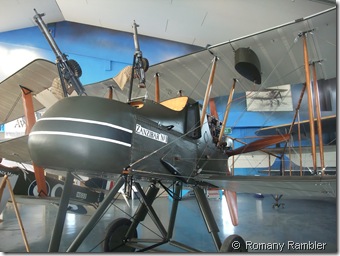 Pusher aircraft with guns in the front and the propeller at the back
Pusher aircraft with guns in the front and the propeller at the back
The Bristol Fighter was so successful that after WW1 they were used extensively around the world until the 1930s. The aircraft in the collection was one of six recovered from a UK barn in 1970 where the fuselages were used as roof trusses. Thank goodness they were finally rescued. Our guide took us around the hanger, very knowledgably discussing each plane. He talked about the Sopworths, a couple of Fokkers, and a yellow Italian job. Other later aeroplanes also jostled for room, and several aeroplane engines were around the perimeter of the hanger.
A fine set of flying clothes stood proudly to attention. The leather coat, hat and goggles would have given a little protection to the pilot in the open cockpit . We were told that some of the planes were run on castor oil, and the white silk scarves were used to wipe the oil off the pilot’s faces.
Harry the mascot has his own quarters at the hanger. Harry is an Irish Red Terrier and during WW1 this breed was used to carry messages between the allied trenches. Harry is the Rabbit Control Manager and his job is to keep the runway clear of rabbits. He is doing an excellent job, but unfortunately, he has also dealt with someone’s hen which was wandering around.
This is a very interesting “living museum”, filled with planes of a bygone era. It is well worth a visit for those with an interest in history, and the military. Be sure to check out the website of The Vintage Aviator as it shows some interesting flying footage.
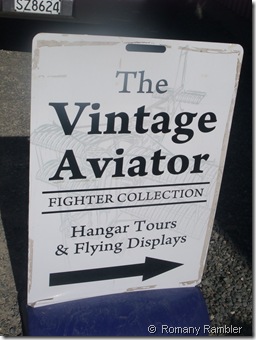
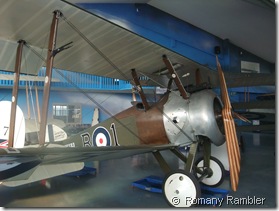
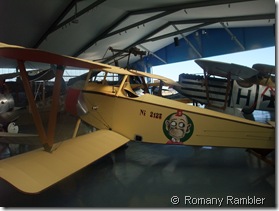
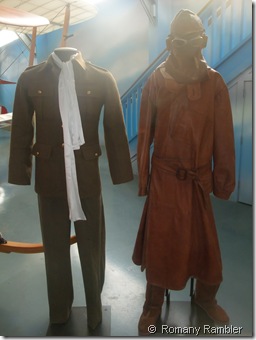
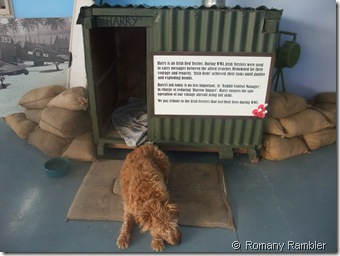
No comments:
Post a Comment